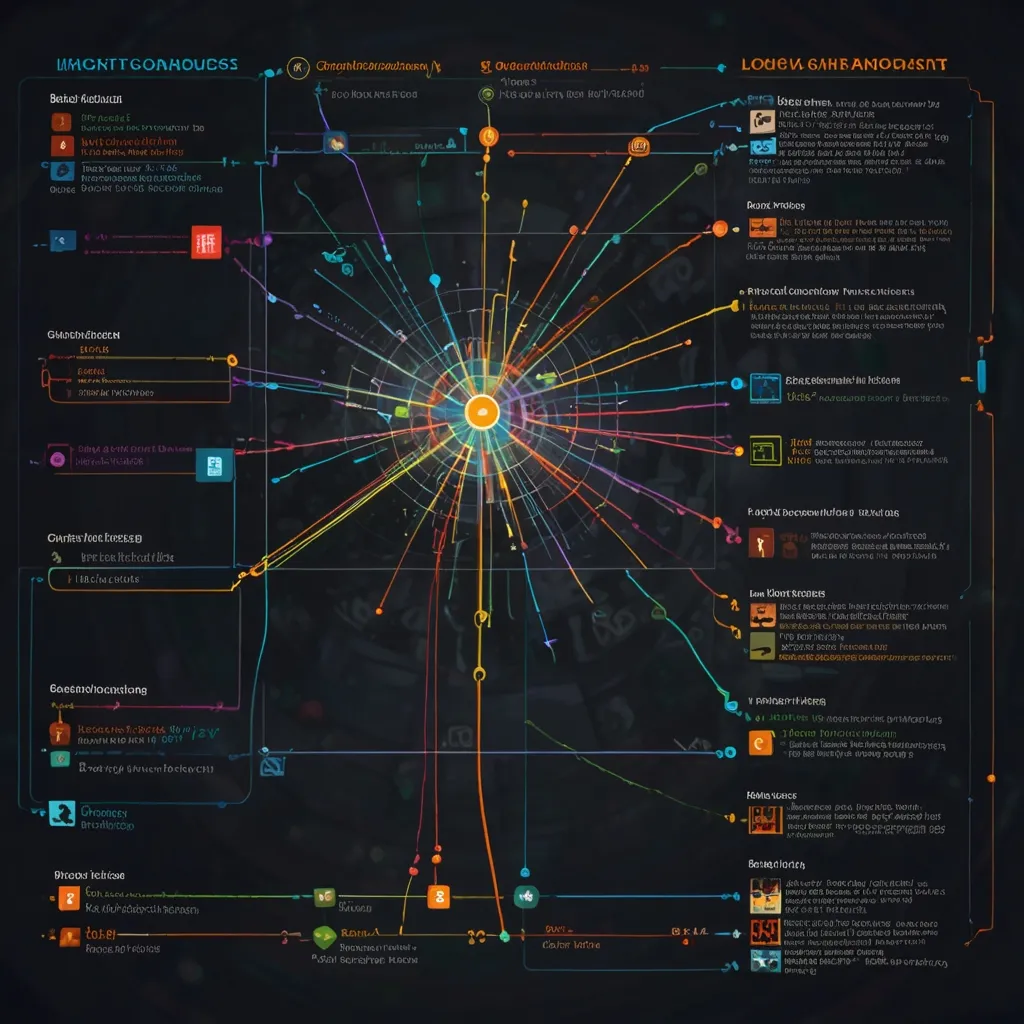Building a high-frequency trading bot is no small feat, but it’s an exciting challenge that combines cutting-edge technology with the fast-paced world of finance. I’ve always been fascinated by the intersection of programming and trading, so I decided to dive into creating my own bot using Go and Kafka.
Go, or Golang, is a fantastic choice for this kind of project. Its speed and efficiency make it perfect for handling the massive amounts of data and quick decision-making required in high-frequency trading. Plus, its simplicity and strong standard library make it a joy to work with.
Kafka, on the other hand, is a distributed streaming platform that’s ideal for handling real-time data feeds. In the world of high-frequency trading, where milliseconds can make the difference between profit and loss, Kafka’s ability to process streams of records in real-time is invaluable.
Let’s start by setting up our Go environment and installing the necessary Kafka libraries. If you haven’t already, you’ll need to install Go and set up your GOPATH. Once that’s done, we can install the Kafka library:
go get github.com/confluentinc/confluent-kafka-go/kafka
Now, let’s create a basic structure for our trading bot:
package main
import (
"fmt"
"github.com/confluentinc/confluent-kafka-go/kafka"
)
type TradingBot struct {
consumer *kafka.Consumer
producer *kafka.Producer
}
func NewTradingBot(brokers string) (*TradingBot, error) {
consumer, err := kafka.NewConsumer(&kafka.ConfigMap{
"bootstrap.servers": brokers,
"group.id": "trading-bot",
"auto.offset.reset": "earliest",
})
if err != nil {
return nil, err
}
producer, err := kafka.NewProducer(&kafka.ConfigMap{
"bootstrap.servers": brokers,
})
if err != nil {
return nil, err
}
return &TradingBot{
consumer: consumer,
producer: producer,
}, nil
}
func (bot *TradingBot) Run() {
// Main trading logic goes here
}
func main() {
bot, err := NewTradingBot("localhost:9092")
if err != nil {
panic(err)
}
defer bot.consumer.Close()
defer bot.producer.Close()
bot.Run()
}
This gives us a basic structure to work with. The TradingBot struct holds our Kafka consumer and producer, which we’ll use to read market data and send trading orders.
Now, let’s flesh out the Run method with some basic trading logic:
func (bot *TradingBot) Run() {
bot.consumer.SubscribeTopics([]string{"market-data"}, nil)
for {
msg, err := bot.consumer.ReadMessage(-1)
if err != nil {
fmt.Printf("Consumer error: %v\n", err)
continue
}
// Process market data
order := bot.processMarketData(msg.Value)
if order != nil {
// Send order
bot.sendOrder(order)
}
}
}
func (bot *TradingBot) processMarketData(data []byte) *Order {
// Implement your trading strategy here
// This is where the magic happens!
return nil
}
func (bot *TradingBot) sendOrder(order *Order) {
// Implement order sending logic
}
type Order struct {
// Define order structure
}
This is where things get really interesting. The processMarketData function is where you’ll implement your trading strategy. This could involve technical analysis, machine learning models, or any other approach you believe will give you an edge in the market.
One simple strategy might be a moving average crossover. Let’s implement a basic version:
import (
"encoding/json"
"time"
)
type MarketData struct {
Symbol string `json:"symbol"`
Price float64 `json:"price"`
Time int64 `json:"time"`
}
type Order struct {
Symbol string `json:"symbol"`
Side string `json:"side"`
Price float64 `json:"price"`
Amount float64 `json:"amount"`
}
func (bot *TradingBot) processMarketData(data []byte) *Order {
var marketData MarketData
err := json.Unmarshal(data, &marketData)
if err != nil {
fmt.Printf("Error parsing market data: %v\n", err)
return nil
}
// Calculate short-term and long-term moving averages
shortMA := bot.calculateMA(marketData.Symbol, 10)
longMA := bot.calculateMA(marketData.Symbol, 50)
// Generate buy signal if short MA crosses above long MA
if shortMA > longMA {
return &Order{
Symbol: marketData.Symbol,
Side: "buy",
Price: marketData.Price,
Amount: 1.0, // Adjust based on your risk management
}
}
// Generate sell signal if short MA crosses below long MA
if shortMA < longMA {
return &Order{
Symbol: marketData.Symbol,
Side: "sell",
Price: marketData.Price,
Amount: 1.0,
}
}
return nil
}
func (bot *TradingBot) calculateMA(symbol string, period int) float64 {
// Implement moving average calculation
// This would typically involve maintaining a price history
// and calculating the average over the specified period
return 0
}
This is a very basic implementation, and in a real-world scenario, you’d want to add much more sophisticated analysis and risk management. You’d also need to implement the calculateMA function, which would involve maintaining a price history for each symbol you’re trading.
Now, let’s implement the sendOrder function:
func (bot *TradingBot) sendOrder(order *Order) {
orderJSON, err := json.Marshal(order)
if err != nil {
fmt.Printf("Error marshaling order: %v\n", err)
return
}
bot.producer.Produce(&kafka.Message{
TopicPartition: kafka.TopicPartition{Topic: &[]string{"orders"}[0], Partition: kafka.PartitionAny},
Value: orderJSON,
}, nil)
}
This function converts our Order struct to JSON and sends it to a Kafka topic called “orders”. In a real trading system, you’d have another component listening to this topic and executing the orders on the exchange.
Building a high-frequency trading bot is an complex endeavor that requires deep knowledge of both programming and finance. The bot we’ve outlined here is just the tip of the iceberg. In a production system, you’d need to consider things like:
- Backtesting your strategy on historical data
- Implementing robust error handling and logging
- Adding monitoring and alerting systems
- Optimizing for low latency (every microsecond counts!)
- Implementing risk management and position sizing
- Handling multiple symbols and markets
- Dealing with exchange APIs and order types
- Implementing a more sophisticated trading strategy
Remember, high-frequency trading is a highly competitive field. The strategies that worked yesterday might not work tomorrow, so continuous learning and adaptation are key.
As I’ve worked on trading bots, I’ve learned that the most challenging part isn’t usually the coding - it’s developing a profitable strategy. It’s a constant process of research, testing, and refinement. And let’s not forget the importance of proper risk management - no matter how good your bot is, trading always involves risk.
Building a trading bot like this is an exciting journey that combines many different skills. It’s a great way to learn about distributed systems, real-time data processing, and financial markets. Just remember, if you’re planning to trade with real money, start small and be prepared for the possibility of losses. Happy coding and trading!






